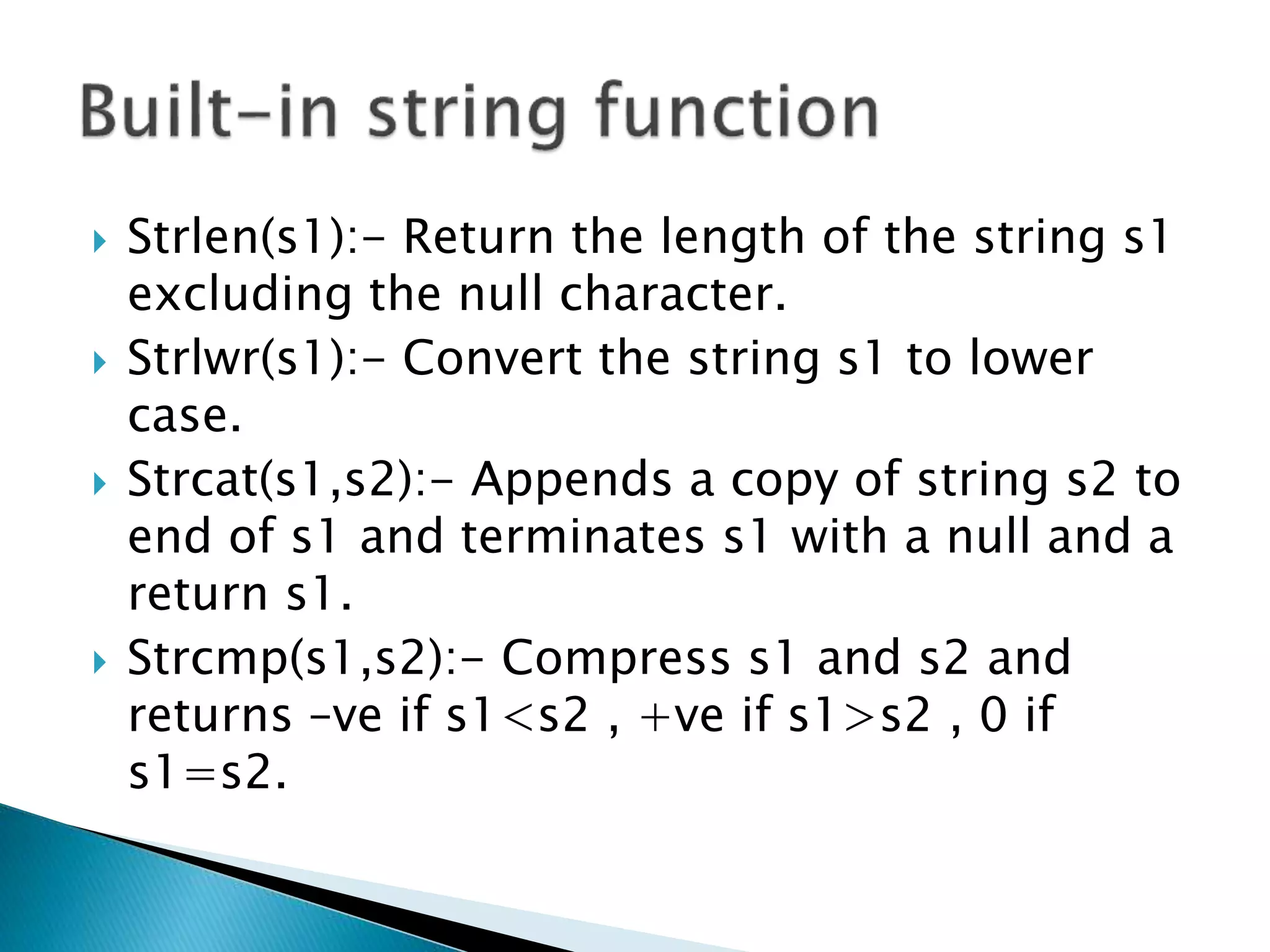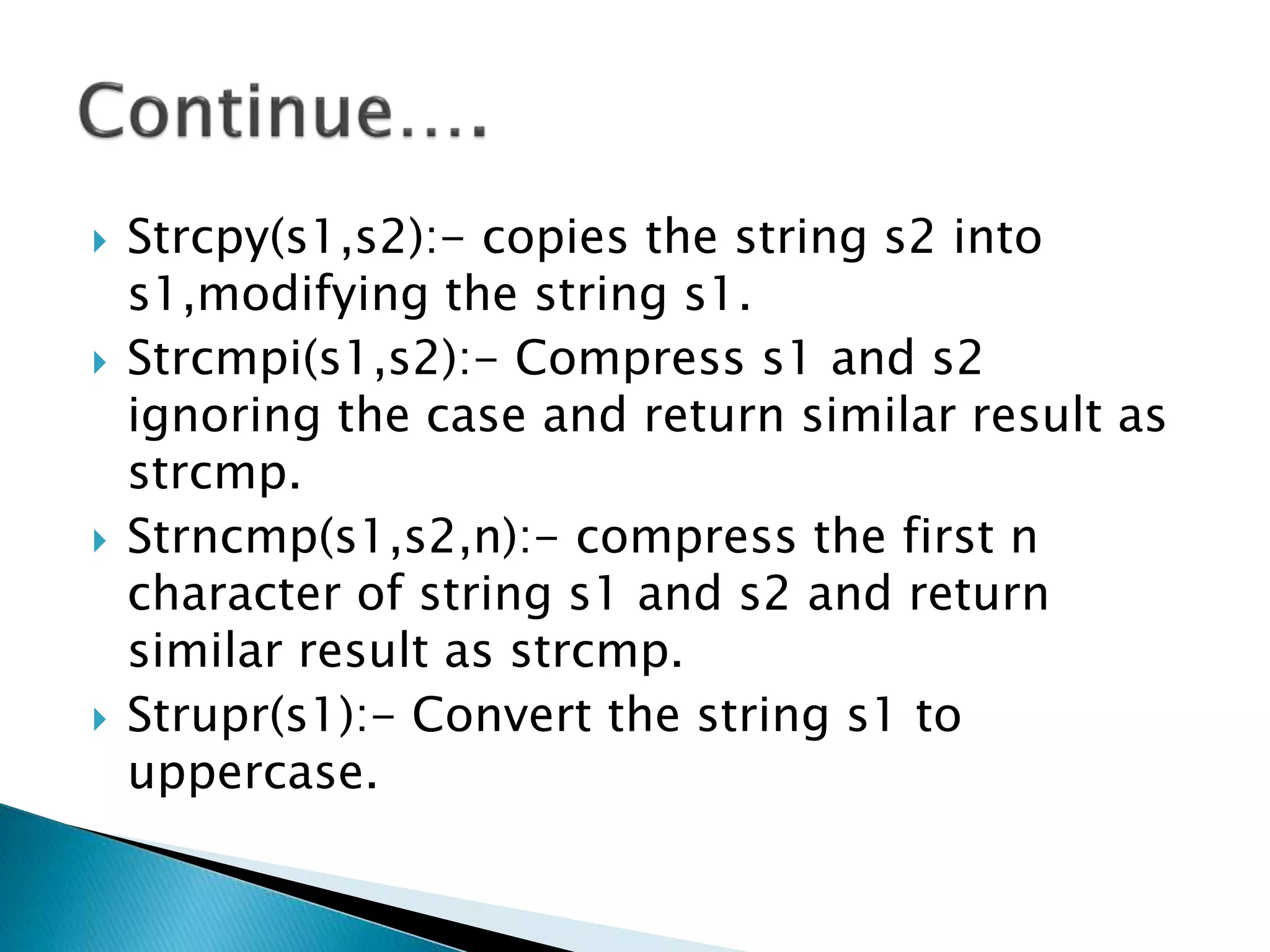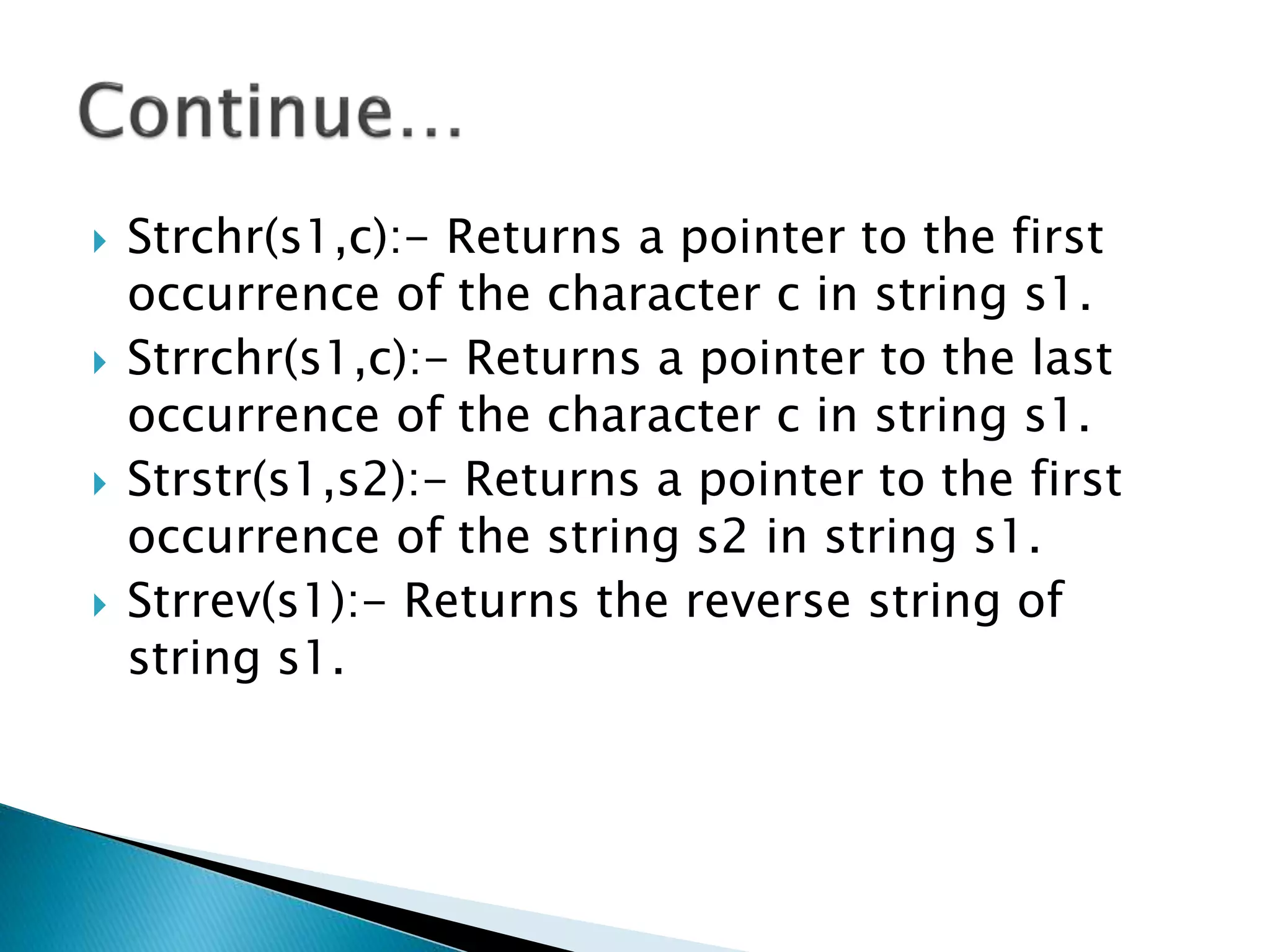This document discusses strings in C programming. It defines a string as a sequence of characters treated as a single data item. Strings are represented using character arrays, which can be initialized individually or as a single string with a null terminator added automatically. Standard functions like scanf(), printf(), gets(), puts() can be used for input and output of characters and strings. Additional string handling functions defined include strlen(), strlwr(), strcat(), strcmp(), strcpy(), strchr(), strrchr(), strstr(), strtok(), strrev(), and more.

![ A string is a sequence of character that is treated
as a single data item.
String is represented as a CHARACTER ARRAY.
Declaration of string
Syntax:- char string_name[length];
Example:- char name[5];
This example declares an array name
which can store at the most 5
characters.](https://image.slidesharecdn.com/string-171016142744/75/String-Computer-programming-and-utilization-2-2048.jpg)
![ Character array can be initialiized in two ways- as
individual character or as single string.
Example:-
Char greet[10]= {‘h’, ’e, ’l’, ‘l’, ‘o’, ‘!’};
Char greet[10]=“hello!”;
Char greet[]=“hello!”;
The compiler automatically stores the null
character at the end of the string. Memory
representation of char greet[]=“hello!”; is as
follows:
h e l l o ! 0](https://image.slidesharecdn.com/string-171016142744/75/String-Computer-programming-and-utilization-3-2048.jpg)






